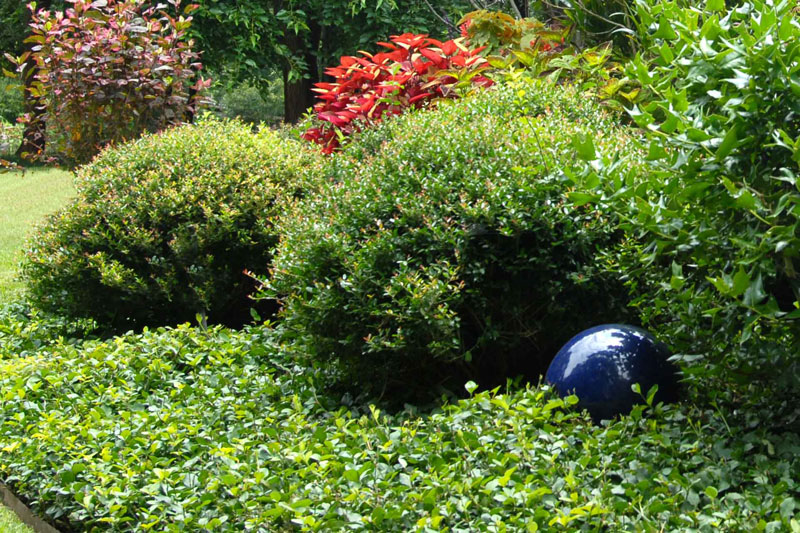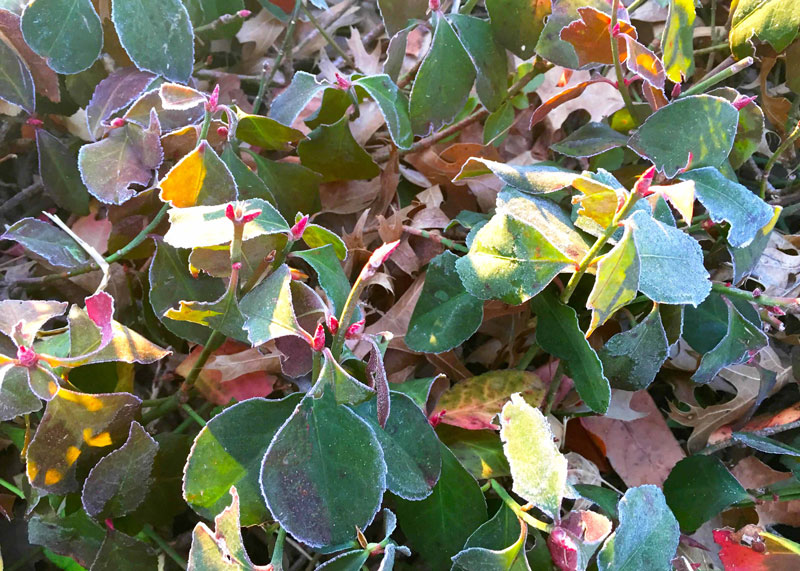Purple wintercreeper euonymus – by Steve Huddleston
For 30 or 40 years Asian jasmine reigned as the most popular full-sun groundcover across big parts of Texas. It still is a favorite where winters aren’t especially threatening, but in North Texas, temperatures into low teens and single digits can cause Asian jasmine to turn brown and die back to the ground.

Enter purple wintercreeper euonymus. We’ll just call it “wintercreeper” or “purple wintercreeper” from here on. It’s a cold-hardy, trailing evergreen groundcover that is suited to all of Texas. As people began to try it 25 years ago, its popularity grew. Now commercial landscapers use it more than they do Asian jasmine in the colder parts of our state.
Here’s what you’ll want to know…
• Common name: purple wintercreeper
• Scientific name: Euonymus fortunei ‘Coloratus’
• Plant family: Celastraceae, the Euonymus family
• Native home: China, Japan, and Korea
• Hardiness: USDA Plant Hardiness Zones 4a to 9b (certainly includes all of Texas)
• Exposure: sun or shade – best color in winter if exposed to sun
• Soil preference: will adapt to almost any soil as long as it’s kept uniformly moist. Established plantings, however, will tolerate dry conditions for short periods of time.

• While useful as a groundcover, it will try to climb tree trunks, fences and walls. Keep it out of beds with other shrubs where it could become entangled with them.
• Mature height as a groundcover: 6-8 in., but will require annual mowing or trimming to maintain those heights. Best time for trimming is late winter before new growth, but plantings can be trimmed at any time during the growing season to maintain tidy appearance.
• Plant from 4-in. or 1-gal. pots on 16- to 24-in. centers. Lay stems in place to cover bare spaces until they root to the ground. You may want to trim upward-turning shoots lightly for first year to keep bed more attractive.

• Fertilize with all-nitrogen lawn food in early spring, again in early summer. Follow each feeding with deep watering.
• Watch for appearance of euonymus scale. While uncommon on groundcover plantings in full sun, it may show up when wintercreeper is allowed to climb fences and tree trunks. Apply labeled organic or inorganic controls to stop its spread.
• Propagated by stem cuttings rooted several per 4-in. pot.
• All parts of the plant are poisonous, although that is rarely a problem.


